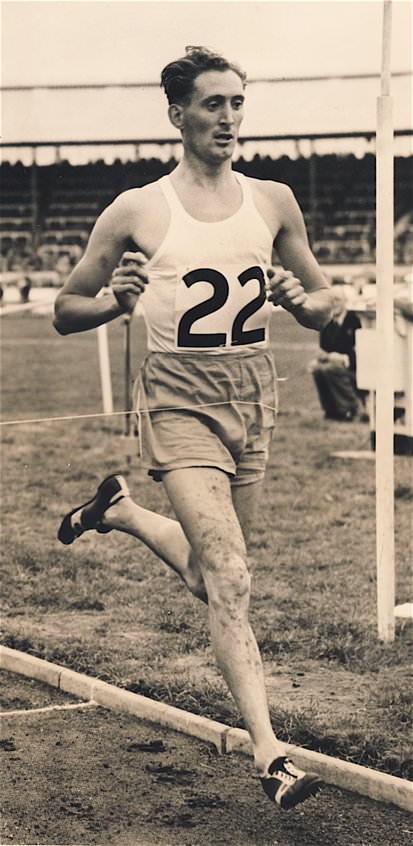
1950 European Championships Brussels, August 23-27 800Boysen of Norway, who had run a fast 1:48.7, was the clear favorite. Hansenne and Bengtsson were also highly favoured. The British were not expected to be in the medals, even by their own supporters. Bannister, who had just completed his Oxford finals, admitted, “I was ill-prepared for such an important race.” (Bannister, First Four Minutes, p.101) Boysen shot away at the start and created a huge 15m lead. His lead at the bell (53.8 but 51.8 in T&FN) was 10m from Swedes Bengtsson and Linden. Hansenne and Bannister were a few yards behind him, and Parlett and Clare were even further back. Hansenne moved hard round the curve with Bengtsson on his heels. At 260m to go Bannister caught them and moved into second. The three of them were now catching the flagging Boysen. Coming into the straight Bannister and Hansenne had passed Boysen together and prepared for a duel over the last 80 meters. But behind them Parlett was smoothly making up ground.
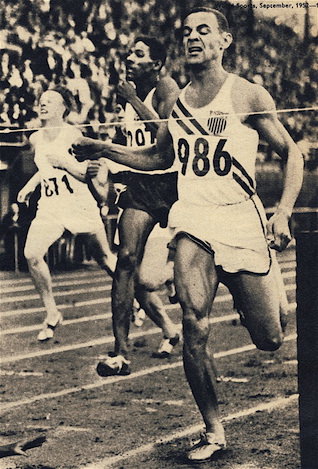
1952 OLYMPIC GAMESHELSINKI, FINLANDJULY 19-AUGUST 3 Performances were much better than in the previous Olympics. Recovery from the stresses and deprivations of the Second World War meant that runners were able to train harder and eat properly. Zatopek, with his triple crown, outshone all other runners. 800 Mal Whitfield, 31, the 1948 800 Olympic champ, showed his strength and maturity in this race. He had been flying bombing missions in the Korean War, but was given time off for the Olympics. After a false start by Nielsen, the race started slowly with the elegant Wint leading the first lap in 54.0. Whitfield, who had started last to stay out of the wind, moved up a few places on the back straight and then eased into third at the bell. On the back straight he surged past Heinz Ulzheimer of Germany and his longtime rival Arthur Wint to gain the lead just before the bend. These two held on to him round the last bend, but he had control of the race. When Wint got within a yard, Whitfield was able to accelerate just enough to hold him off. It was a classy and economic performance by the American, who had the 400 and the 4x400 relay ahead of him. “I had plenty left in the stretch,” he told Track & Field News.
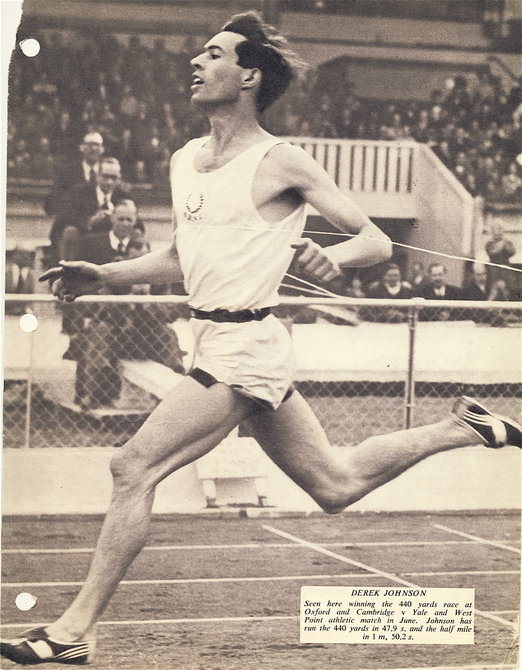
1954 EMPIRE GAMESVANCOUVER, CANADA, July 30-August 7 These games were the most famous of all the Empire (and later, Commonwealth) Games. The intriguing four-minute mile barrier had been finally broken in 1954, first by Roger Bannister and then by John Landy. Now these two milers were to meet head-on in the games. The excitement surrounding this clash built to a high pitch. However, excessive enthusiasm had some negative effects not only on the race itself but also on the Marathon, which was in progress while the Mile race took place.
1954 European ChampionshipsBern, Switzerland, August 25-29 Despite the modest location, Berne Neufeld Stadium, this meet produced some stellar performances, including three WRs and 16 meet records. As Track and Field News (7.8) said, “These Games were probably second only to the Helsinki Olympics.” Bannister followed up his Vancouver victory with another major title here. The biggest news was the emergence of a new distance star: Vladimir Kuts. At the same time it was evident that Zatopek was no longer a threat over 5,000. The best race was undoubtedly the 800.
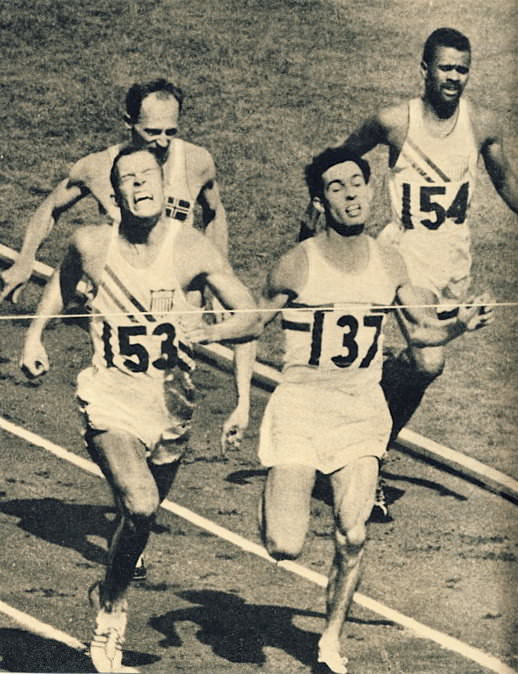
OLYMPIC GAMES 1956 Melbourne, Australia, November 22-December 8 800The finalists lined up in gusty conditions, while the last bend was still being compacted by two large rollers. Fortunately, the attention of the starters was alerted. After a delayed start, American Tom Courtney, who was the favorite for this event, went straight into the lead from compatriot Arnie Sowell and Britain’s Derek Johnson. On the back straight, Sowell took over and led Courtney and Johnson through 400 in 52.6. The two Americans stayed ahead in the next 200, while Boysen moved up to Johnson. On the crown of the last bend Courtney moved up beside Sowell, and the two Americans ran side by side into the final straight, with Johnson in hot pursuit. But then the Americans moved apart, allowing Johnson to sprint through between them. For “eight unbelievable strides,” as The Times correspondent put it (Nov. 27, 1956), Johnson was in the lead. But Courtney showed his amazing strength by responding and gaining a two-foot lead over Johnson at the tape. Boysen finished as fast as Johnson and was only 4/10 of a second behind Courtney for the bronze. A fading Sowell was fourth just 2/10 back.
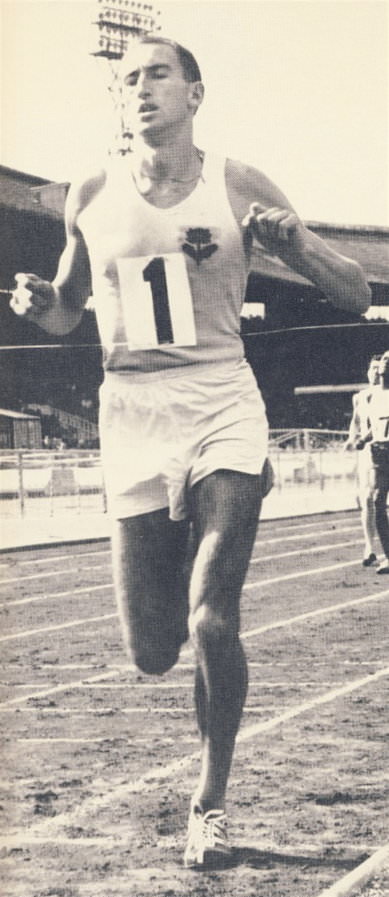
EMPIRE GAMES Cardiff, Wales, July 18-26, 1958. On the new En Tout-Cas track in Cardiff, Australian and New Zealand runners dominated the distance events, winning all the races. Foremost was 20-year-old Elliott’s impressive 880-Mile double. But emerging longer distance runner Dave Power was almost as impressive in the Six Miles and Marathon. Then Murray Halberg showed that he had what it takes to win the big races, in this case the Three Miles. Also, worthy of mention is Albie Thomas, who was third in the Mile and second in the Three Miles—although he should perhaps have won the Three Miles, having recently set a 13:10 WR. UK athletes—Eldon, Pirie, Hewson—disappointed. But Merriman and Wilkinson ran well.
1958 EUROPEAN ATHLETICS CHAMPIONSHIPSStockholm, Sweden, August 19-24 800This was the race that favourite Brian Hewson wanted to run, but he was selected for the 1500 instead. His team-mates Derek Johnson and Mike Rawson thus became Britain’s hopes. These were the days before the staggered lane start, so the first bend was inevitably a melee as runners fought for crucial positions. Waegli of Switzerland ran hard from the outside to get into the lead. In doing so he caused a lot of jostling on the first bend, as a result of which the man on the inside, Rawson, was pushed off the track for three strides. Waegli meanwhile took the field through 200 in 25.0. At the bell (53.0) he still led. But going into the back straight he suddenly slowed, and Schmidt of Germany found himself in the lead.
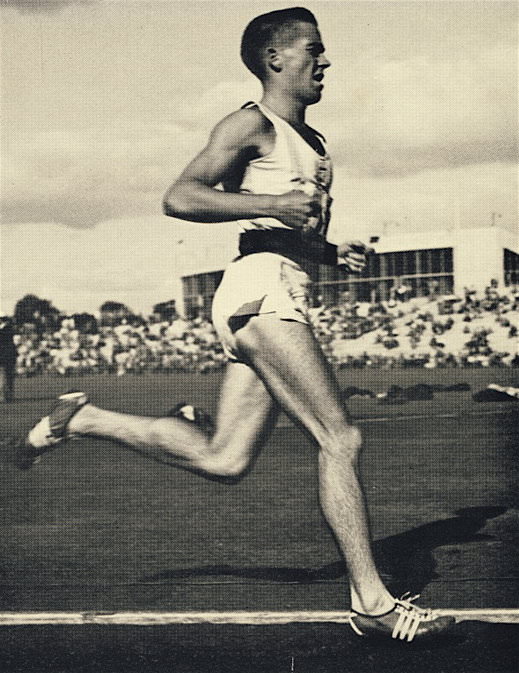
Albie Thomas: Profile 1935-2013When 21-year-old Albie Thomas of Australia burst on to the international scene with a fifth place in the 1956 Olympic 5,000, coach Percy Cerutty considered him the “best runner, technically speaking, in the world today.” (Middle-Distance Running, pp.49-50) Eighteen months later, Thomas fulfilled the great promise Cerutty had seen in him with an amazing 59 days of racing on the European circuit, during which he won nine of 16 races. In these races he not only broke two world records (Two Miles and Three Miles) but also won two Commonwealth Games medals, broke the Australian 3,000 record, ran a 4-minute mile, paced Herb Elliott to both his Mile and 1,500 world records and won the Three Miles in the British Games.
Bannister v Landy1954 Empire Games Mile, Vancouver, CanadaGreat Races #9 The build-up to this race was incredible. Athletics, as one of the truly international sports, had followers all over the world. The first four-minute mile had captured the imagination of millions. And now the first two runners to have broken that barrier earlier in the summer, Roger Bannister and John Landy, were to meet in the Vancouver Empire Games. The race received huge coverage in the world press. It was given an array of names, The Miracle Mile, The Mile of the Century. As well, the television cameras were ready to supply the new medium live to an estimated 10 million North American viewers. Radio provided live coverage to the rest of the world. Bannister and Landy had become celebrities, hunted down by reporters and cameramen as soon as they arrived in Vancouver. The two runners dealt with the situation in different ways: Bannister avoided attention as much as he could and trained in private; Landy was happy to talk to anyone and trained in public.
Bannister's 3:59.4 First Four-Minute Mile, Oxford, UK, May 1954Great Races #8 The black-and white photo of Roger Bannister crossing the finish line in Oxford on May 6, 1954, is one of the most famous in the history of running. Head back, eyes closed and mouth agape, with transfixed spectators and an overwhelmed official in the background, Bannister is caught a fraction of a second before he breasts the tape just less than four minutes after the starter’s gun had fired. This was the moment that man first broke four minutes for the Mile. It was a symmetrical barrier: four laps of a quarter-mile track to be run in less than one minute per lap. Several athletes had come close over the previous dozen years. Yet there was something about the symmetry of the four-minute mile that made is seem impossible. This impossibility had surely affected Hagg and Andersson in the 1940s. And the same psychological effect was felt by the leading milers in the 50s when John Landy, Wes Santee and Roger Bannister were all “racing” towards the first sub-4. The story of these three great runners’ attempts to be the first is finely recounted by Neal Bascomb in his book The Perfect Mile.